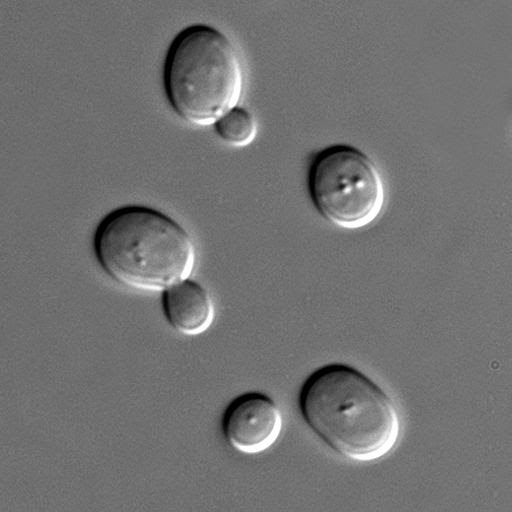All Things

- The Horizon Effect
We are well aware of the horizon effect: as we walk towards the horizon, the horizon gets further away. In science sometimes this effect seems to apply. Let us look at a few examples:Mycoplasma genitalium genetic mapSynthetic biology: In 1960, producing...
- Predicting The Scientific Future
Man likes making predictions of the future. Scientists are human beings, therefore they make predictions about the progress to be expected in various fields of research during the coming years, decades and even centuries. These predictions are widely...
- Sex And Species, Two Related Concepts
Taxonomic categoriesThe species is the basic taxonomic category used by biologists to classify living things. The other categories (genus, family, order, class and phylum) are considered artificial and arbitrary. On the other hand, we tend to regard the...
- The Origin Of Sexual Reproduction
Cromosomas X e YSexual reproduction is the most common form of reproduction among eukaryotes, including multi-cellular living beings. After billions of years of asexual reproduction among prokaryotes, who share genetic information by exchanging plasmids...
- What Is Life?
Saccharomyces cerevisiaeAfter a century discussing about the origin of life, we are not closer to knowing what did happen. In the mid-twentieth century, when Stanley Lloyd Miller performed the famous experiment where he applied energy to a mixture of...
All Things
Artificial life is not here
 |
| Saccharomyces cerevisiae (yeast) |
Last spring, the media published the news that a scientific team had replaced the smallest chromosome of a yeast cell by a synthetic chromosome, built from the nucleic acid sequence of the replaced chromosome with a few changes, such as the elimination of a section. Once added to the yeast genome, the synthetic chromosome seemed to work correctly.
The headline of the article linked above is meaningful: Scientists Move Closer to Inventing Artificial Life. As it is worded, it seems to imply that we are close to building artificial life. But is this true? Or is this one of those typical overstatements of the media?
In the scientific parlance, artificial life may have two very different meanings:
1. Simulation of the behavior of living beings by means of computer programs. This is one of my fields of work.
2. Construction of a living being, not from previously existing living beings, as it is done in nature, but from different chemical substances, in a similar way as what we think could have happened billions of years ago, when life on Earth appeared.
Obviously the article I am commenting refers to the second alternative. Yes, it is an important step, but the headline is a little far-fetched: artificial life is not close to us, and won?t be with us for a long time, if ever.
Sometimes the media appear to believe that the creation of artificial life will take place when the complete genome of a living single-cell will be replaced by a complete different artificial genome, and the result will be viable. But even this would not be artificial life. If it can be done (epigenetic incompatibility could make it impossible), what would have been attained is the manipulation of a living being of one species, to transform it into an individual of a different species. A great achievement, yes, but life would not have been created, because the initial cell was alive. Things must be named properly.
How could artificial life be created? It should be done in the following way:
1. Take a number of chemical substances of different types: proteins, nucleic acids, and many more.
2. Put them inside a lipid-protein capsule (a membrane).
3. And the most important step: the whole must act as a single-cell living organism, rather than as a dead cell.

To make things clearer, let us make a comparison. What has been achieved (replacing a chromosome of a living being by a similar one, which works more or less the same, with a few differences) is equivalent to inserting an artificial heart in a human being. Yes, it is very important. But would anyone say that by doing so we are creating an artificial human being? Or that we are on the way to doing it?
To build an artificial human being, such as the Frankenstein monster in Mary Shelley?s novel, it is not enough to join a set of human parts extracted from corpses, and build a body. In that way, we would just get a corpse. To get a living human being, something more is needed. And what is missing is actually the most difficult step.
The same post in Spanish
Manuel Alfonseca
- The Horizon Effect
We are well aware of the horizon effect: as we walk towards the horizon, the horizon gets further away. In science sometimes this effect seems to apply. Let us look at a few examples:Mycoplasma genitalium genetic mapSynthetic biology: In 1960, producing...
- Predicting The Scientific Future
Man likes making predictions of the future. Scientists are human beings, therefore they make predictions about the progress to be expected in various fields of research during the coming years, decades and even centuries. These predictions are widely...
- Sex And Species, Two Related Concepts
Taxonomic categoriesThe species is the basic taxonomic category used by biologists to classify living things. The other categories (genus, family, order, class and phylum) are considered artificial and arbitrary. On the other hand, we tend to regard the...
- The Origin Of Sexual Reproduction
Cromosomas X e YSexual reproduction is the most common form of reproduction among eukaryotes, including multi-cellular living beings. After billions of years of asexual reproduction among prokaryotes, who share genetic information by exchanging plasmids...
- What Is Life?
Saccharomyces cerevisiaeAfter a century discussing about the origin of life, we are not closer to knowing what did happen. In the mid-twentieth century, when Stanley Lloyd Miller performed the famous experiment where he applied energy to a mixture of...
